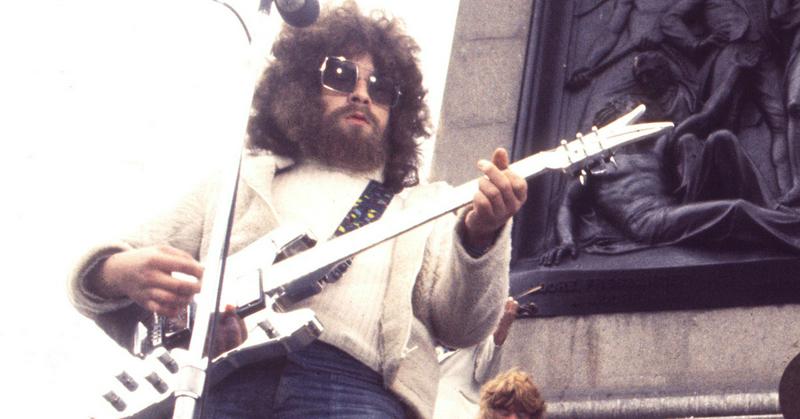Mr. Blue Sky Is The Happiest Song On Earth, According To Science
By | November 27, 2019

"Mr. Blue Sky" by Electric Light Orchestra is a joyous chunk of '70s rock as only ELO's musical genius Jeff Lynne could deliver. But its bouncy rhythms and soaring choruses aren't merely to our liking (or yours) -- they've been scientifically proven to be happiness-inducing. According to analysis of the song's composition, it's the happiest classic rock tune on record.
To refresh your memory, here's "Mr. Blue Sky:"
Read on for the story behind its formula for happiness.
Science Finds The Happiest Song

Netherlands-based researcher Jacob Jolij developed what he calls the "Feel Good Formula," with which he feels it is possible to determine the happiest song on earth. Jolij studied 126 songs from a period of 50 years and surveyed 2,000 people to ask them which songs made them the happiest. His studies were based on earlier findings from the University of Missouri where they found that listening to music while trying to improve their moods did become happier.
What Makes A Song Happy?

During his study, Jolij found that to be a “happy song,” the song needed to have a tempo that differed from the normal pop song, typically in the 150 BPM (beats per minute) range, and it needed to be written in a major key. If not written in a major key, the song needed to use more than three chords. In addition to the music itself, the lyrics for the happiest songs either focus on positive themes or are a bit nonsensical.
An initial study revealed that Queen’s “Don’t Stop Me Now” was the happiest song, but when the formula was refined, that song moved into second place, with “Mr. Blue Sky” by Electric Light Orchestra coming out on top, even though Jolij contends that cultural differences may influence the happiest song from place to place.
How The Happy Happened

Jeff Lynne wrote and produced “Mr. Blue Sky” for ELO’s Out of the Blue album. The song is the fourth track of the “Concerto for a Rainy Day” suite. It was included on the third side of the double album and eventually released as a single.
In 2012, an animated video directed by Michael Patterson and Candace Reckinger featuring animation by University of Southern California students was released on ELO’s official website:
The Sound Of The Song

The song itself has a relatively simple concept: a blue sky appears after a rainy day. It begins with the four chords and harmonic rhythm that it shares with The Beatles’ “Yesterday.” One of the noteworthy sounds in the song is what seems to be a cowbell, but is actually a drumstick hitting the side of a fire extinguisher. It also relies heavily on a vocoded voice. At the end of the song, the tempo changes, the lyrics stop and a choir begins singing. Technically, this concerto coda was not part of the song, but rather to signal the end of the suite.
Success After Its Time Period

The song was a hit, though its performance was perhaps lackluster now that we know it's the happiest of all time -- it to number six on the charts in the U.K. and number 35 in the U.S. "Xanadu," "Don't Bring Me Down," and "Livin' Thing" were all bigger hits for ELO. But in the years since "Mr. Blue Sky"'s 1978 release, it has gone on to become one of the most streamed and downloaded songs of the 1970s. It has also been included in many movies and television shows including Dr. Who , Guardians of the Galaxy II, and The Eternal Sunshine of the Spotless Mind. It was also featured during the opening and closing ceremonies for the 2012 Olympics.
Several artists have attempted to cover the song and at the 2015 Grammys, Ed Sheeran performed it with ELO.
